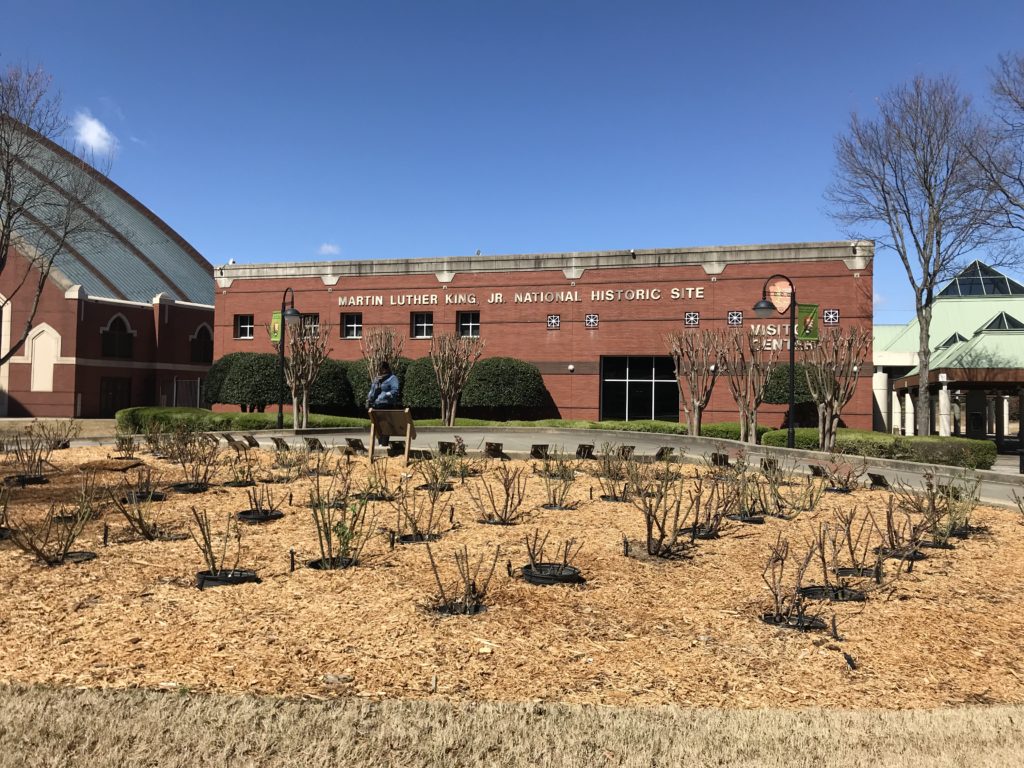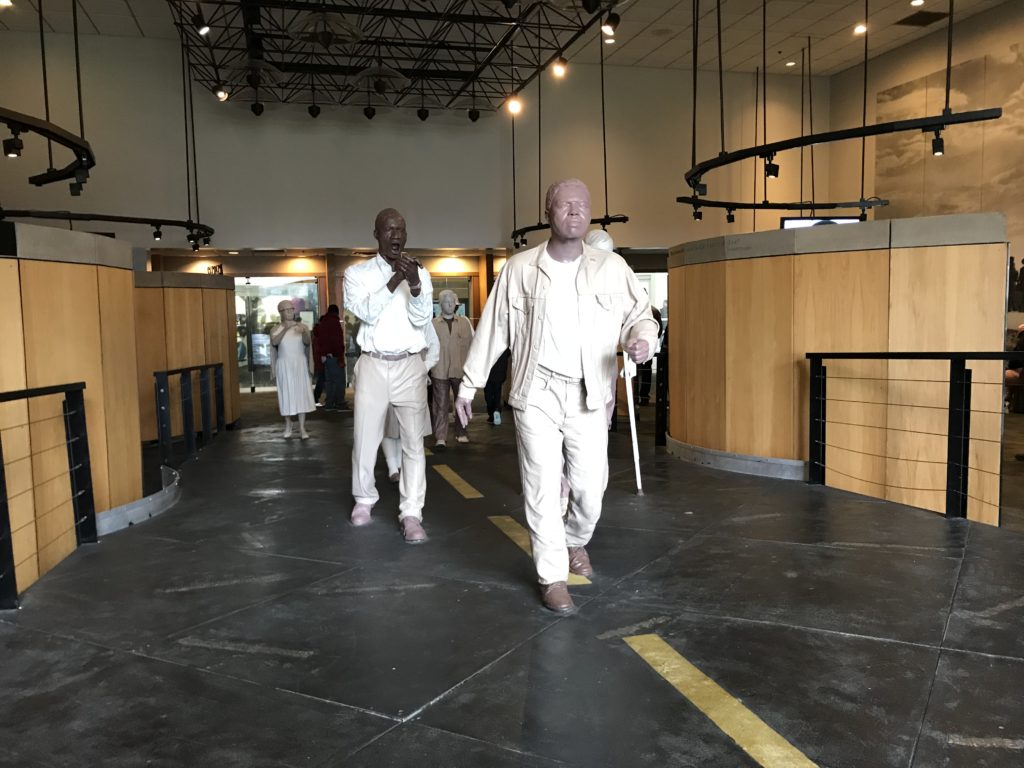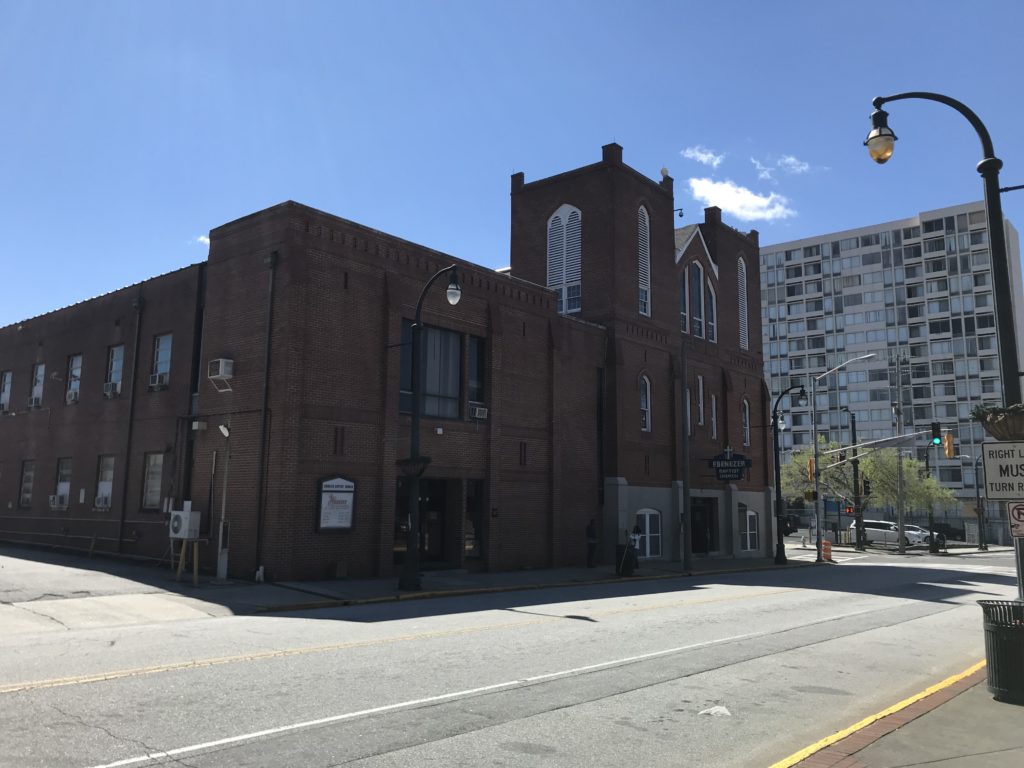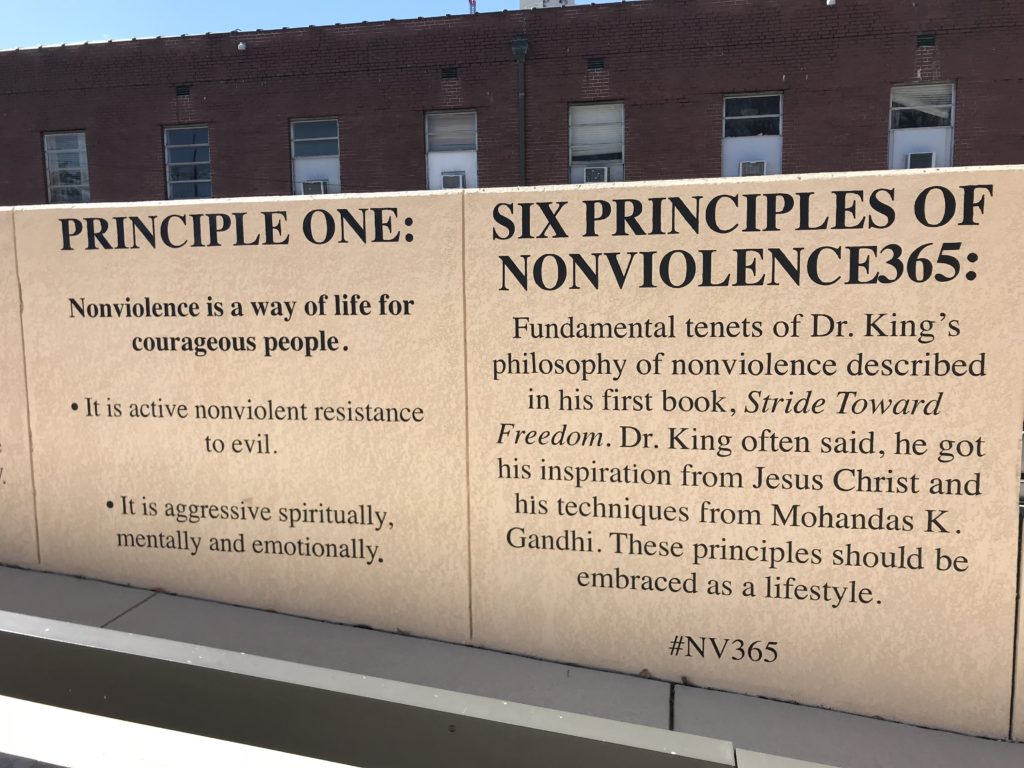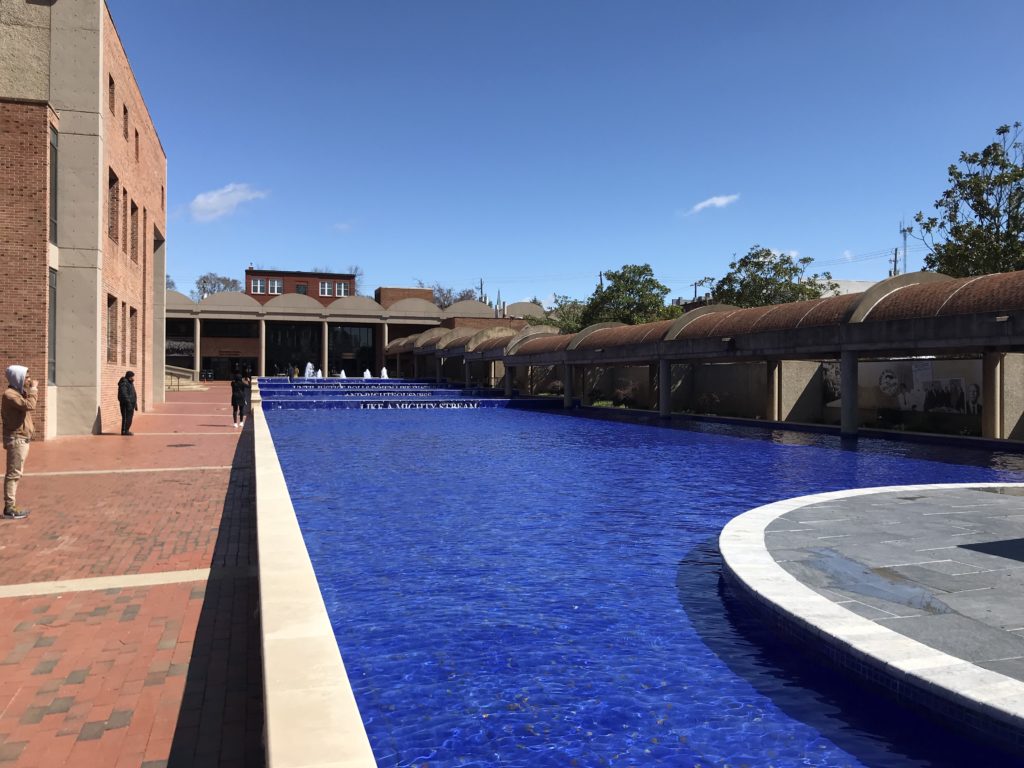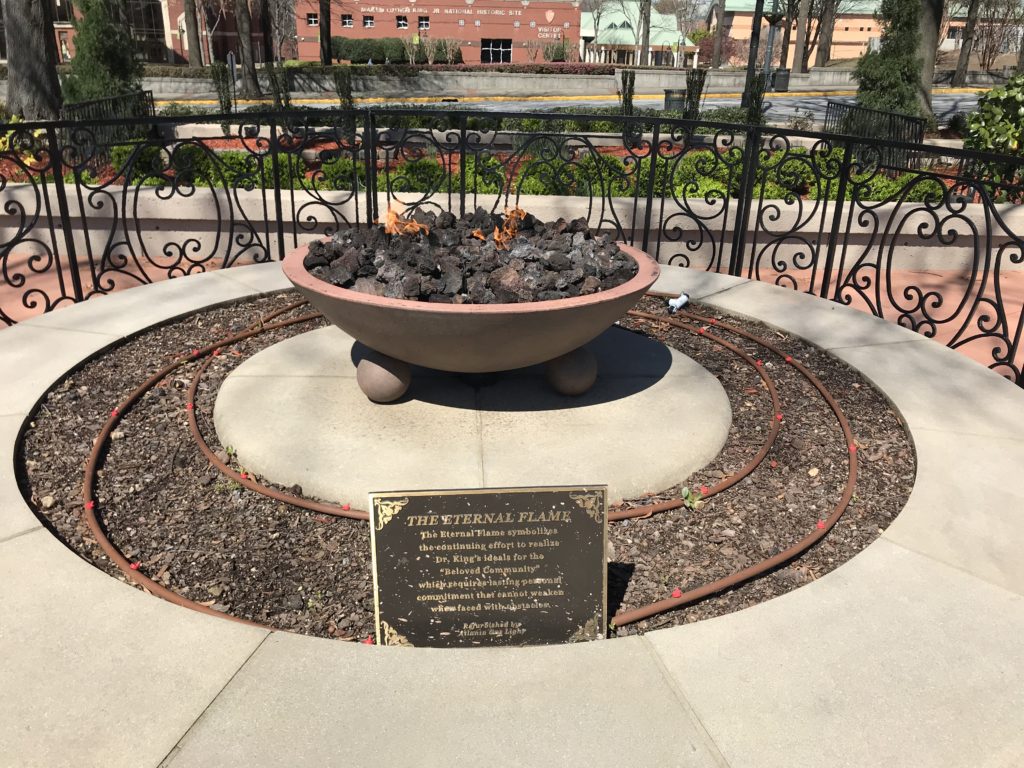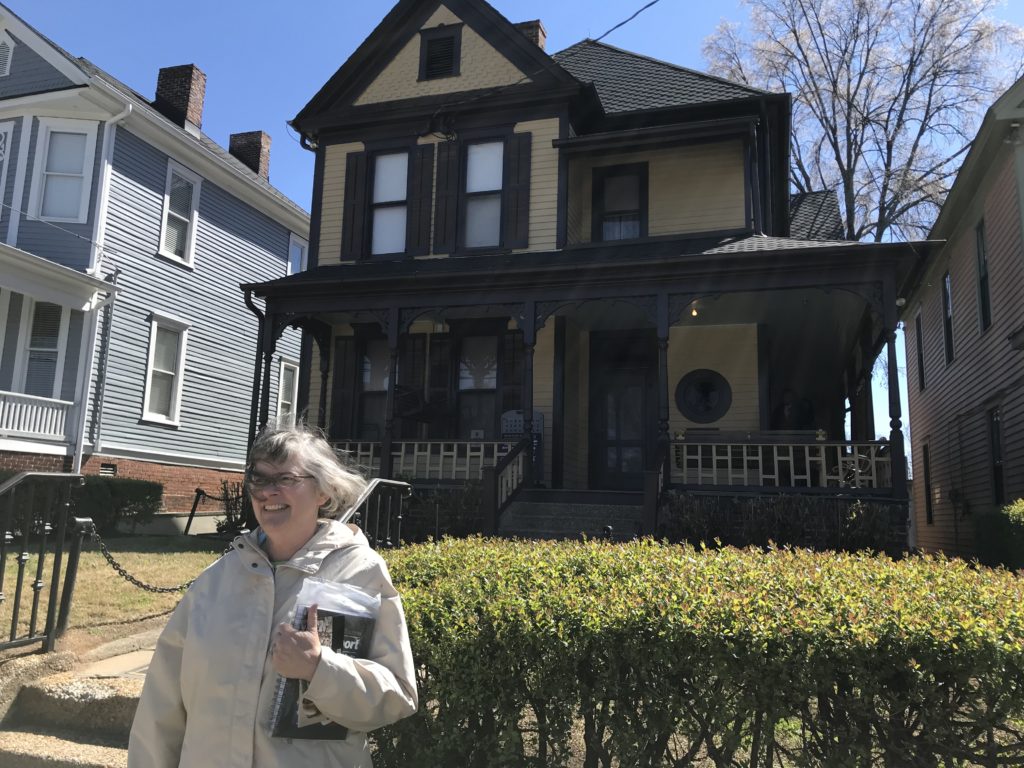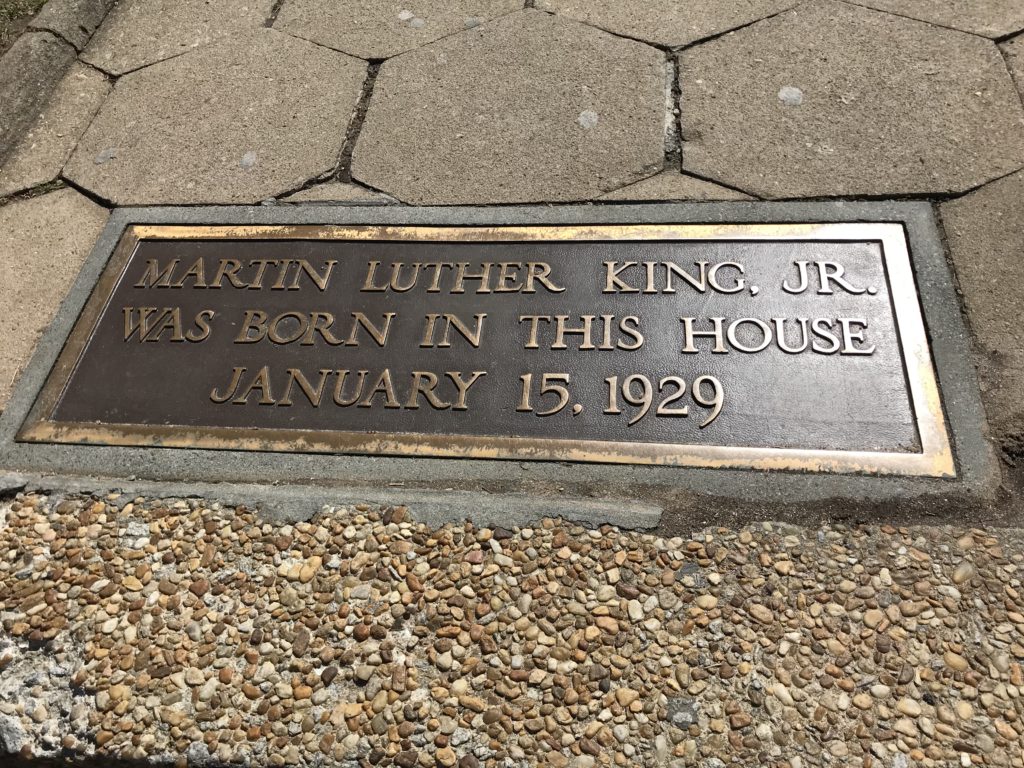 I am moving along in my quest to visit all the National Park Sites – 417 of them – in the United States. My Passport Book, Collector’s Edition is great because it lists of all the National Park sites in every region and every state. I can easily see where I have been and where I need to go. I only needed two more sites in Georgia to complete the Georgia checklist. So Tom and I made the long drive up to Atlanta to get the final two parks. First up was Martin Luther King Jr. National Historical Park.
I am moving along in my quest to visit all the National Park Sites – 417 of them – in the United States. My Passport Book, Collector’s Edition is great because it lists of all the National Park sites in every region and every state. I can easily see where I have been and where I need to go. I only needed two more sites in Georgia to complete the Georgia checklist. So Tom and I made the long drive up to Atlanta to get the final two parks. First up was Martin Luther King Jr. National Historical Park.
Martin Luther King Jr. National Historical Park began by setting aside the house where Martin Luther King Jr. was born. Over time, the National Park Service built a beautiful Visitors Center and Museum, an International Peace Center, several symbolic plazas, and the graves of Dr. and Mrs. Martin Luther King, Jr. Eventually the National Park Service acquired all the houses on the street. The Ebenezer Baptist Church where Martin Luther King Jr., his father, and his grandfather were all pastors is also part of the park.
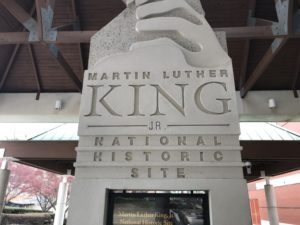 Consequently, the National Historical Park is quite large for an urban National Park Site. The park also contributes to the revitalization of the neighborhood and is the #1 tourist destination in Atlanta. Even though we visited on a cold Monday in March, there were hundreds of people visiting.
Consequently, the National Historical Park is quite large for an urban National Park Site. The park also contributes to the revitalization of the neighborhood and is the #1 tourist destination in Atlanta. Even though we visited on a cold Monday in March, there were hundreds of people visiting.
Taking a tour of Martin Luther King Jr.’s childhood home is the most popular activity at the park. Unfortunately, only 15 people can tour the home at a time, and the tours fill up fast. You can’t make reservations ahead of time – it is first come, first served on the day of the tour. So people will come to the park when it first opens, sign up for a tour, and then find other things to do in the park until their tour time. Tom and I arrived at the park after all the tours for the day were full.
But we watched a very good movie on the Civil Rights movement and saw part of a movie about Martin Luther King Jr.‘s childhood. We also spent a lot of time in the museum which does an excellent job of putting the Civil Rights movement in perspective. I don’t understand why we can’t get past judging people based on the color of their skin. It makes me sick to my stomach to see the hatefulness of white people toward people of color. So visiting the museum and watching some of the horrible things done was difficult, but important, for me.
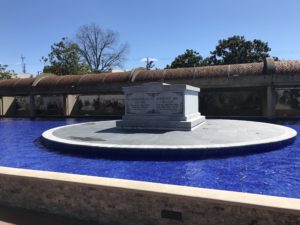 The gravesite for the Kings is another moving part of the park. The two graves are entombed in a sarcophagus on a platform in the middle of a reflecting pond. Not only does this honor the Kings in a special way, I’m sure it also keeps down the vandalism and hate crimes that might be perpetrated on the tomb otherwise. Tom and I walked through the “World Peace Rose Garden” and saw Freedom Hall where special programs take place. We walked through the neighborhood where Martin grew up and saw the outside of the birth home, the Ebenezer Baptist Church, and Historic Fire Station No. 6. The fire station is where Martin interacted with some white adults because black men were not allowed to be firefighters in Georgia.
The gravesite for the Kings is another moving part of the park. The two graves are entombed in a sarcophagus on a platform in the middle of a reflecting pond. Not only does this honor the Kings in a special way, I’m sure it also keeps down the vandalism and hate crimes that might be perpetrated on the tomb otherwise. Tom and I walked through the “World Peace Rose Garden” and saw Freedom Hall where special programs take place. We walked through the neighborhood where Martin grew up and saw the outside of the birth home, the Ebenezer Baptist Church, and Historic Fire Station No. 6. The fire station is where Martin interacted with some white adults because black men were not allowed to be firefighters in Georgia.
One thought that really struck me as we visited all of this was the courage of the black people who participated peacefully in the Civil Rights movement. They did not expect to be treated with civility by the white powers that controlled society. They knew they would be beaten, taken to prison, and that some of them would die. But they were willing to put their lives on the line. By their peaceful response, they exposed the barbarity of the white “civilization” and its unfair practices. Black ministers were often the leaders of the this movement because they were not dependent on white people for their employment.
I wish I could say that society has progressed since the assassination of Dr. King, which occurred 50 years ago today. He was only 39 years old when James Earl Ray shot him. I do not believe that our country has moved ahead, however. Recent events in our country have shown me that many of the people in power in our country still maintain the same evil and racist attitudes. White people can still be just as ugly as they have always been. It is up to all of us, every day, to actively work against systemic injustice.
Our visit to the Martin Luther King, Jr. National Historical Park was not “fun.” But it was powerful, moving, and informative. It made me ask myself how I am working for justice and equality in the world. I am glad that the National Park Service preserves and interprets places like this so we can all learn, grow, and remember.


